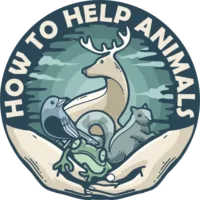Having a garden without using pesticides is a great feeling. Knowing that everything you grow is organic and was made with the help of animals is quite unbeatable feeling. I will guide you on which animals I have incorporated in my garden and how they are helping me making it flourish.
Adding a variety of helpful animals will make your garden thrive. You can use worms to aerate the soil, bees, butterflies, and bumblebees to pollinate the flowers. Birds, ladybugs, and lacewings to eat aphids. Toads and hedgehogs for eating slugs and adding chickens and guinea pigs to enrich the soil.
What animals are beneficial for my garden?
Which animals are most favorable for your garden varies a bit depending on what your goals are with your garden. I will do my best to cover all sorts of different garden environments.
1. Chickens will help with pest and enriching the soil
If you have the space and time for it, you will benefit greatly from adding chickens into your garden. Not only do they provide good company for you, but they also help you with pest control and fertilizing your garden, and enriching your soil.
Chickens eat worms, insects, and slugs to help you with pest control without using any chemicals. They will also enrich the soil with their feces and making it grow naturally. However, there’s a lot of poop after a while, and you will need to have a system for it. I use to rake the garden and collecting the excrements. I then used a funnel and put it in a 2-liter bottle, and mix it with water. Schook it, so the poop tore apart and made some good plant juice.
The biggest issue I had with the hens was they were so curious about everything. They saw me plant seeds in the soil, and right after, they started digging up the seeds and eat them. It was crucial to have a fence around the vegetables so that the chickens couldn’t access the area.
You will need to give the chickens shelter and a place to sleep. Having a hen house is mandatory and you must have room for it in your garden. There are some regulations you will need to know before getting hens.

2. Guinea pigs cut your grass and fertilize your lawn
Raising guinea pigs in your garden is much easier than chickens. Guinea pigs help you cutting the grass but also fertilizing the soil. Collecting their poop and droppings mixed with urea and storing it with water in a soda bottle gives you a great fertilizer. A friend of mine puts the excrements in a bottle, shakes it, so it breaks down. And then use the mixture to fertilize the fruit trees in his garden.
Having the guinea pigs in a rabbit house that can move around easily is key for having freshly cut grass and happy guinea pigs. Make sure the entrances are not facing north or northeast to avoid cold winds.
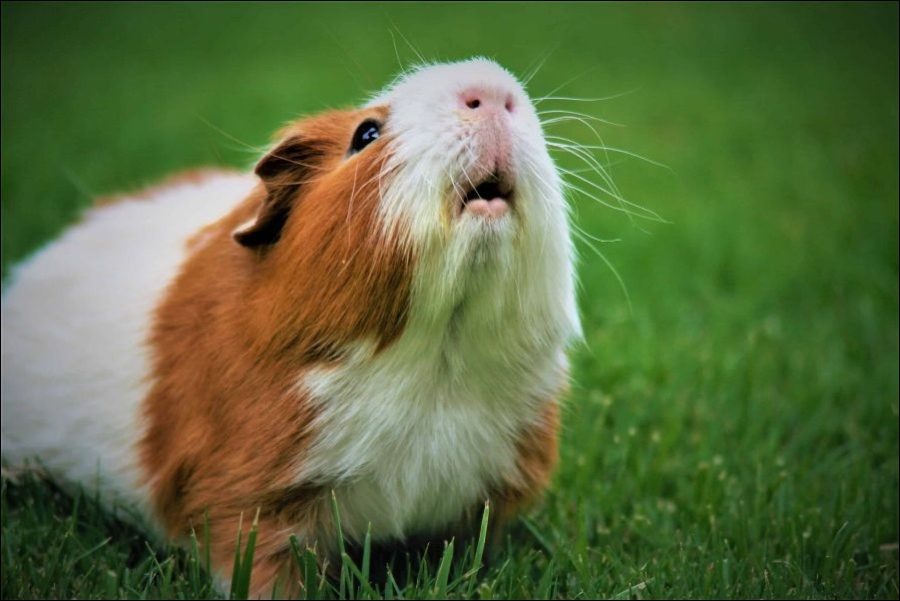
3. Start a vermicompost and have great soil for new plants.
Whether you have a garden or not, you should have your own compost. Composting is not just for those who have a garden. Even those with a balcony can benefit from having a compost. When I lived in an apartment, I had two different composts on the balcony. Every day I fed the compost with leftovers.
The most effective way to compost is to take the help of worms. Worms help to break down leftover food and other dead things you put in the compost faster. To have healthy compost, you need to mix carbon-based materials with hydrogen-based materials. There are many divided opinions about what ratio you should have between these two. Many believe that it should be 70/30 and others 50/50. I think a ratio of 60/40 is the easiest and is what worked best for me. Where 60 are browns and 40 are greens.
Carbon-based materials are often referred to as “browns,” which include leaves and other stuff. Nitrogen-based materials are referred to as “greens” and are basically food scraps.
Examples of “browns”:
- Fallen leaves
- Pine needles
- Straws or hay
- Sawdust
- Coffee filters
- Newspaper
- Tissue paper
Example of “greens”:
- Fruits
- Vegetables
- Grass clippings
- Eggshells
- Seaweed
- Coffee grounds
- Manures
When running vermicompost, you should use red wriggler worms. Red wrigglers are the best worms for composting since they are most fond of working just a few inches below ground which is ideal for breaking down food waste.

4. Let regular earthworms help you aerate the garden.
While red wrigglers love and thrive in your compost, the earthworms are perfect for aerating the soil in your garden. They dig deep and make tunnels for both air, water, and roots to go through. After they have been fed, they leave worm castings which usually is referred to as black gold. The castings are really nutrient-rich and provide excellent fertilization.
You can both get a happy garden and help the earthworms at the same time. During rain, earthworms crawl up to the streets to not get drowned underground. So please go out and grab some and invite them to live in your garden.
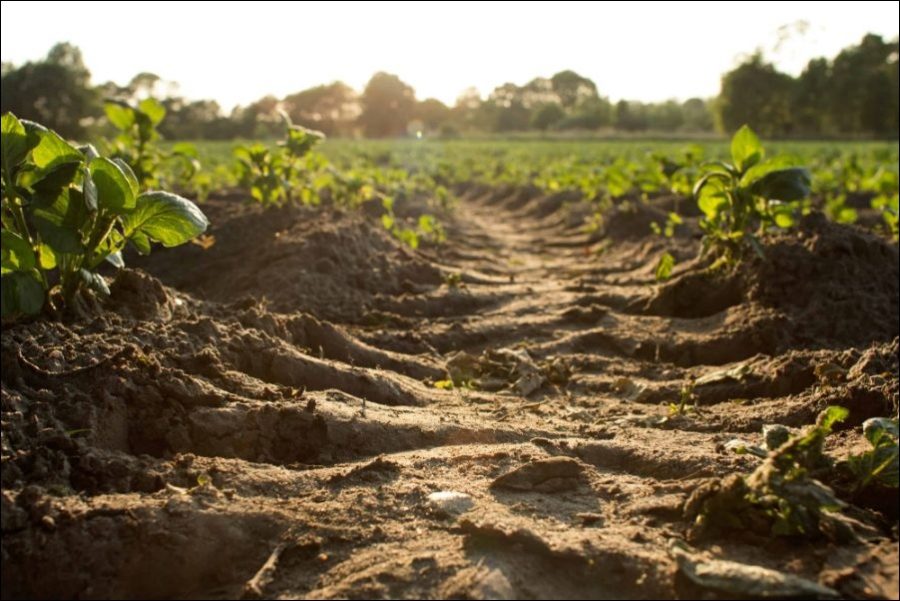
5. Bees will help you pollinate the flowers.
Being friends with the bees is a great thing. If the bees would go extinct, we can say goodbye to almost all fruits and vegetables out there. We have to do whatever we can to encourage bees into our garden and letting them help us.
There are three things you can do for the bees that will help them tremendously.
- Build a bee hotel.
Just by drilling a few holes in some tree trunks and you have given several a stay for the night. Grab some bamboo poles and pack them tight too. If you can get your hands on some bricks with holes in them, that’s also a great help for them. Make sure you place the trunks, bamboo, and bricks in a dry place with no wind, so they get a pleasant stay. You can even take cardboard and roll it into a telescope. Make sure there isn’t any glue on the cardboard, though. You can also add pinecones where ladybugs love to use as a resting place. - Build a bee bar.
This is very easy. The bees need to have a water supply. Put out a plate with water in it. Put some rocks or pebbles or not, why some marbles that stick up from the water where the bees can sit on. The bees will be very thankful. - Plant flowers that bees like.
The reason for the decline in bees is the lack of flowers for them to pollinate.
The bumblebees wake up early in spring, already in April.
Then you can offer wild spring plants like
spring onions, celandine, violets, hollyhock
and small herbs.
Save wild willows and bay willows in natural areas and common places and let them grow big.
Other fine willow species that are better suited to gardens are dew willow, bindweed, wool willow and creeping willow.
A little later in May, fruit trees begin, and berry bushes bloom. Blueberry, gooseberry, and red, white, and black currants are very enticing.
Fruit trees such as cherries, plums, and apples are good food for both bees and
people. Hawthorn and rowan yield
in addition to bird food.
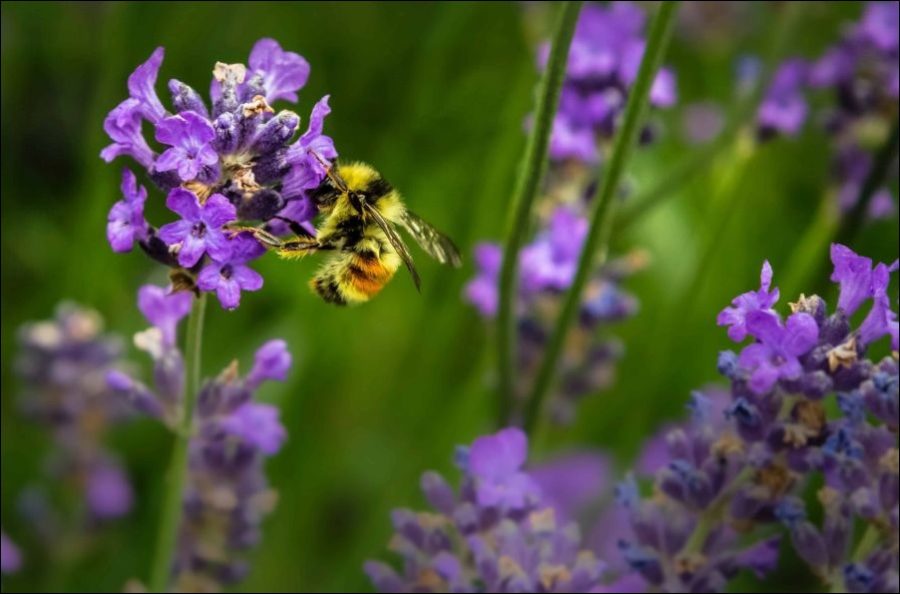
6. Invite insects to get rid of other insects.
I would guess you aren’t a fan of aphids. My crops have been ruined more than once by those small creatures. But not anymore.
Ever since I gathered ladybugs, lace wings and more birds into my garden there are no more aphids around.
The best way to invite ladybugs and lace wings is to place a water source and shelter. The rest will solve it self.
Check out tip number 5 above how to encourage bees into your garden.
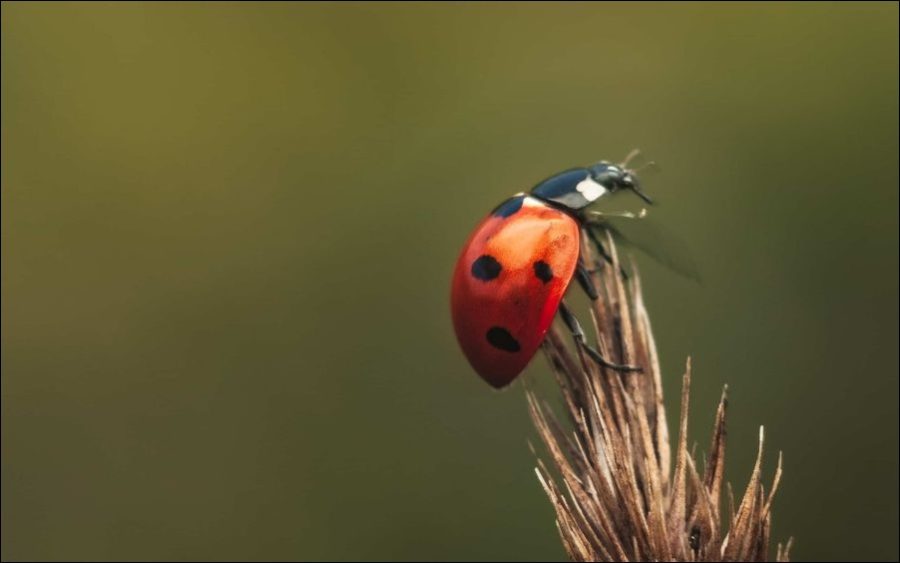
7. Frogs and toads will help you with the slug infestation.
Having a small pond in your garden will do an excellent job of attracting wildlife and especially frogs and toads. They will help you with the slugs that keep eating on your vegetables. Frogs are carnivores which means they only eat meat. There’s no risk the frogs will do anything to adventure your crops. If you wonder what more frogs eat and can help you with, check out the other article I wrote about frogs and what they eat.
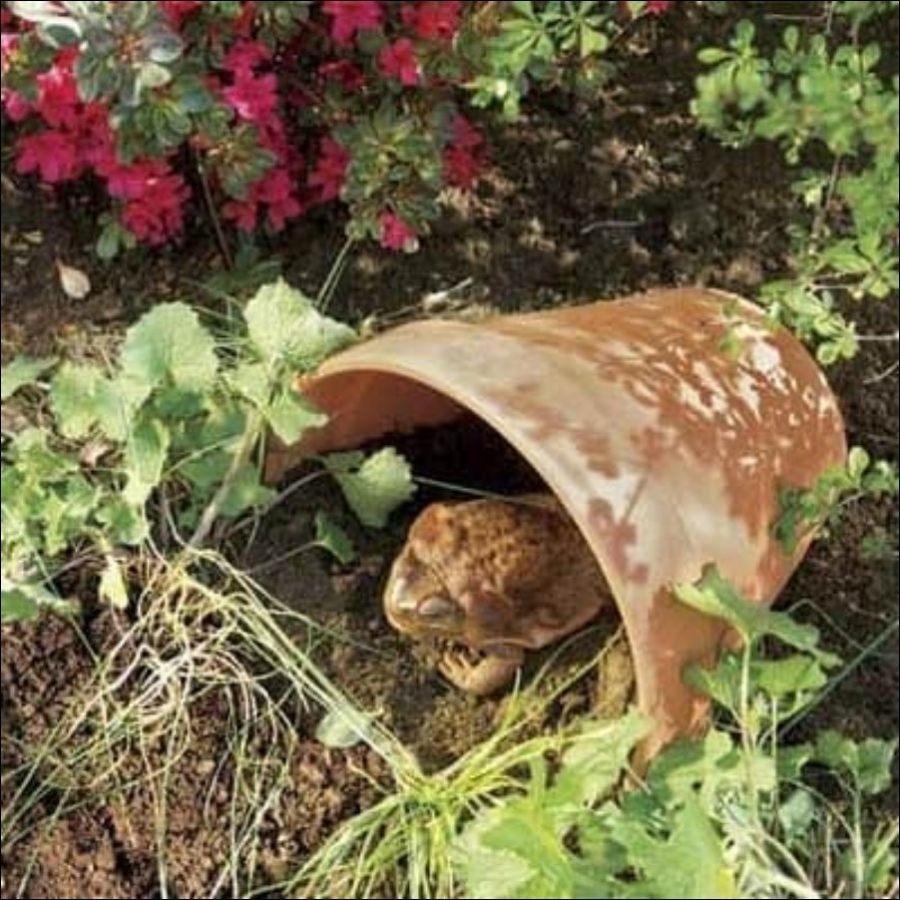
If you would like a small home for your amphibian friends you can dig a small hole and use half a terracotta pot as a roof. Make sure not to point the entrance to the north or northeast to avoid cold winds.

8. Hedgehogs are helping you with the slugs.
If you do not wish to have a pond in the garden with frogs and toads but still wish to get rid of the slugs – hedgehogs might be your friend.
Hedgehogs do not just eat slugs, they also eat beetles, snakes, worms and insects.
You try to invite hedgehogs by building a small house for them to hide in during winter. For example, you can use a wooden box and connect a less wide box as a tunnel for it so predators won’t easily access them. The entrance should be 13-15cm wide. Complement with some hedgehog pellets as well. Make sure not to point the entrance to the north or northeast to avoid cold winds.
First, make sure the hedgehogs can access your garden. If you have a wooden fence or bush, you can cut out a small piece for the hedgehogs to enter through—a good place for some pellets.
You can also build a hay of leaves. Hedgehogs love to hide and hibernate in piles of leaves. Make sure you don’t clean it up in autumn when they are resting. Leave it out.
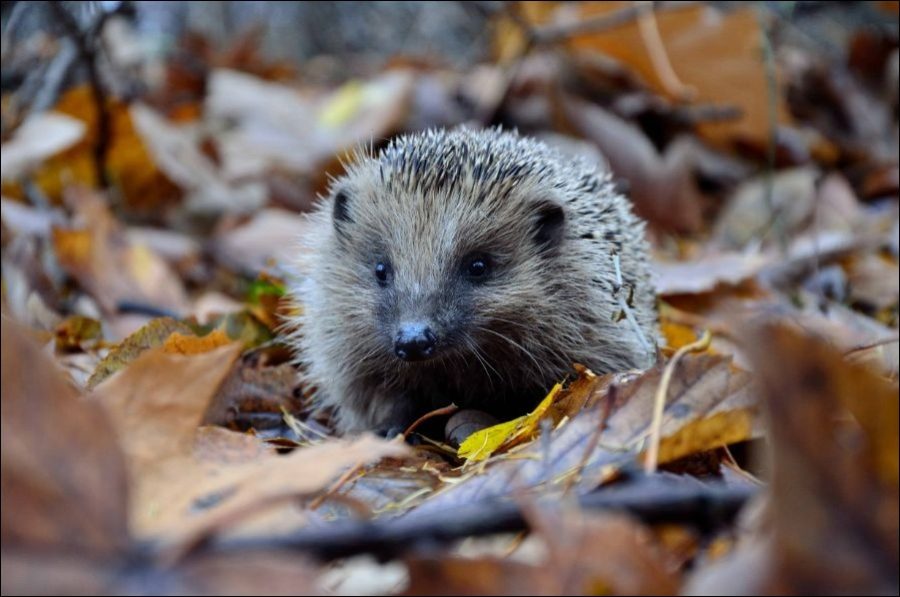
9. Butterflies are your assistant gardener.
Just as bees pollinate the flowers in your garden, so do butterflies. Why not combine the best of two worlds and have both bees and butterflies working together. You can add some butterfly-friendly flowers and install a cute small butterfly house. You have maybe seen butterflies sitting and waving their wings in slow motion some time? When they do that, they are resting and getting their energy up to lift away. However, they are an easy target for predators if they do that in an open environment. Invest in a small butterfly house and let them rest between flowers and during the night.
My favorite butterfly-friendly flowers are sage, lavender and liatris.
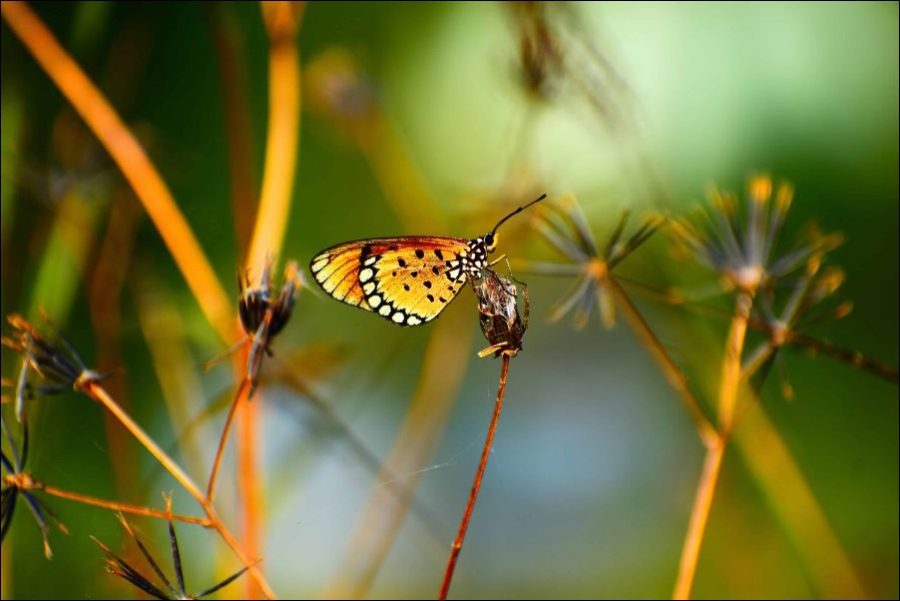
10. Birds will help you get rid of caterpillars
Are caterpillars eating your plants? If so, you will need to attract more birds to your garden. Many bird species favorite food is caterpillars. Install some bird feeders and one or two birdhouses in your garden, and you will hear birds singing, and soon, your caterpillar problem will be gone. Birds also need your help during winter since the food supply is low. I wrote seven tips on how you can help the birds during winter. You might want to check that out before you purchase bird feeders or houses. Ensure you place the birdhouse or bird shelter entrance to the west or south to avoid the strong winds. Beware though since some birds like young seedlings. So be prepared to cover them up with either a transparent bucket or a garden fence mesh.
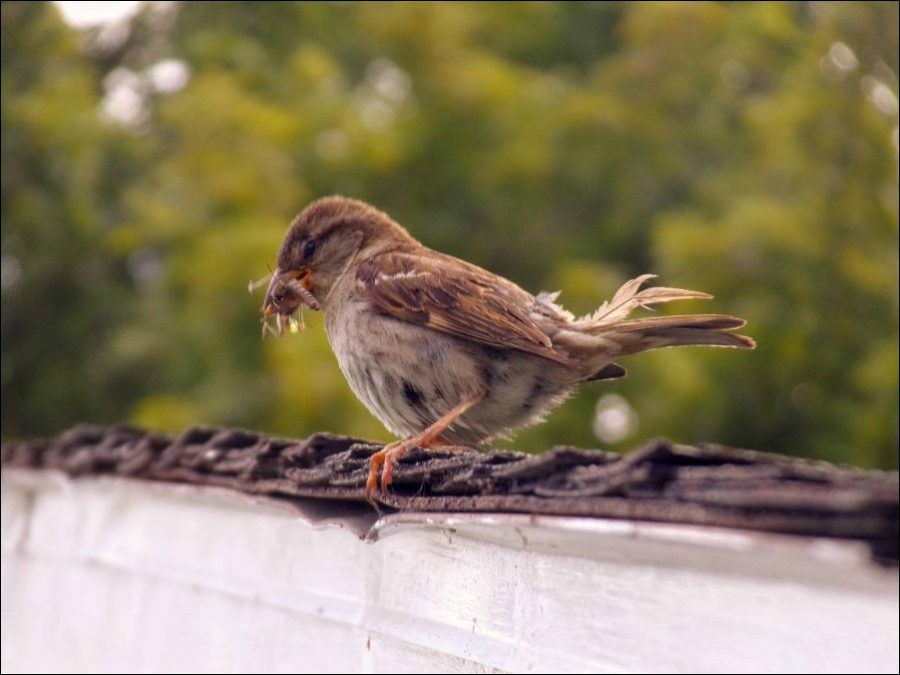
Conclusion
Incorporating wildlife into your garden instead of using chemicals will help your garden thrive and benefit yourself, the animals, and even the environment.
- Chickens will help to enrich your soil and help you remove insects
- Guinea pigs help you to cut the grass and using their poop with water as fertilizer is great
- Red wriggler worms will make your compost thrive and turn your food waste into worm castings
- Earthworms will help you aerate the soil and making it easy to grow flowers and vegetables.
- Bees will help you with the pollinating. Plant some flowers for them and give them a home
- Insects will help you with the aphids eating up your garden. ladybugs are fierce aphid haters.
- Frogs and toads will help the garden with the removal of slugs. Give them a pond and a small house, and they will help you.
- Hedgehogs are also good at taking care of slugs. Give the hedgehogs a pile of leaves to rest under and some pellets, and they will help you against the slugs.
- Butterflies help you pollinate the flowers but giving them a small house will allow them to stay longer.
- Birds eat insects like there’s no tomorrow. So please install a birdhouse and bird feeder and make your home their home.

